Translation: Rich Brown
Photography: Melissa Miranda
The story of Kevin and Miqueas is that of hundreds of children and adolescents from the border town of Malacatán, in the state of San Marcos, Guatemala. They seem inevitably determined to follow in the footsteps of their father, a man who at 24 years old disappeared in the US. In migration, they see a future far from the pandemic, from the lack of jobs, from the precarious life they were born into.
Cristina Bravo starts to cry whenever anyone mentions Juan Carlos, her child. Eight years have passed since he disappeared, and Cristina, 70, still wonders if she’ll see him again.
She knows that her son made it to US soil, that he found work with a construction company and that, from one day to the next, he stopped calling. She’s sure that something awful must have happened, because Juan Carlos always wanted to migrate in order to offer a better life to his family: to his wife, Celia Gómez, and to his two kids, Miqueas and Kevin.
Celia is a young woman, 33 years old, who doesn’t know for certain whether she’s still married, whether she’s a widow, or whether her husband left her.
“He didn’t leave us, my love, it was fate. God knows why He does what He does. My son didn’t leave you,” her mother-in-law repeats every so often. She still believes Juan Carlos will return to the hamlet of San Juan Miramar, on the outskirts of Malacatán.
Celia couldn’t just sit there hoping. She got a job in the fields, left the house where she lived with her husband, and went back to live with her mom, Felipa Ramos, 65, with gray hair, wrinkled hands, and swollen veins.
“This is a house of single moms,” Felipa says. For one reason or another, each of her six daughters is a single mother. Between mothers and children, they are 18 who live in the house—hidden between fruit trees and dirt roads—with rough walls, a sheet-metal roof, and a dirt floor.
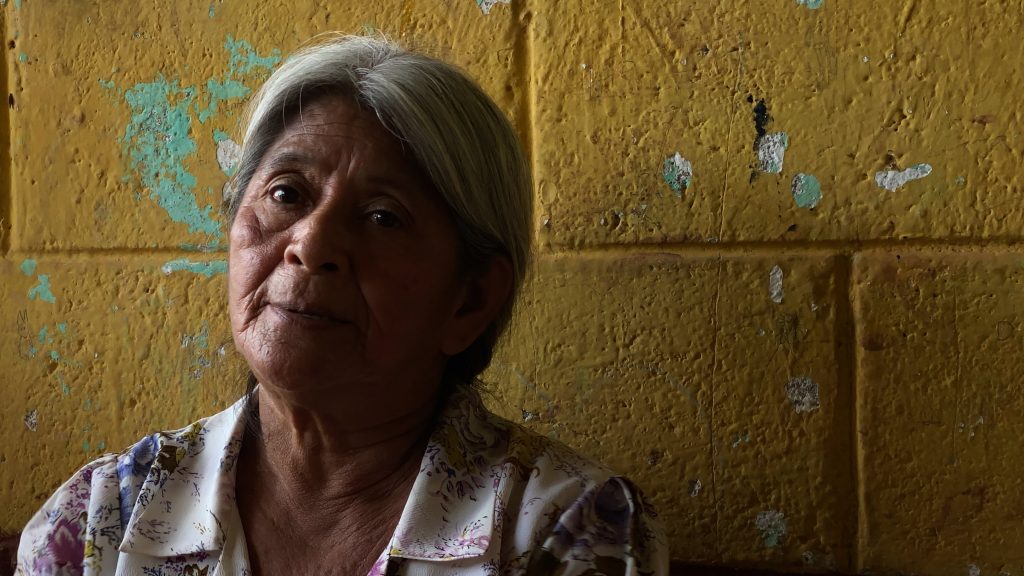
Malacatán is in the state of San Marcos, over 300 kilometers from Guatemala City. It’s a small town. If its 90,000 inhabitants went to the US, they’d fit comfortably in LA’s Rose Bowl Stadium.
Here, in Malacatán, 91% of the population lives in conditions similar to those of Felipa and Celia, in rural areas, in homes with little or no access to basic services.
Malacatán’s downtown center is a little different. There are banks, schools, government buildings, and all kinds of shops. Life in the town is defined by its condition as a stop on the way elsewhere. It’s located right on the border between Guatemala and Mexico, and so the cultural differences on either side are almost imperceptible. The Guatemalan side feels a lot like Mexico; they call kids “chamacos,” the main streets are fill of taco stands, and Mexican soccer team jerseys are just as common as Guatemalan ones.
The natural border between Guatemala and Mexico is the Suchiate River, which thousands of Central American, South American, and even African migrants cross every year as part of their journey to the US.
It is impossible to quantify how many people cross fleeing Malacatán’s poverty and lack of opportunity. The number of Guatemalan families that migration has disintegrated is another unknown. But here are two relevant figures:
- Last year, despite the restrictions imposed by the pandemic, the state of San Marcos received the second-most migrants returned from the US by air, and the most migrants returned overland from Mexico. Most were men being deported.
- According to the International Organization for Migration, more people in San Marcos receive remittances than in any other state of Guatemala, except that which encompasses Guatemala City. Most of those people are women left in charge of divided families.
Women like Felipa, Celia, and her five sisters. Despite it all, this house of single mothers has a happy spirit. Among so many boys and girls, the afternoons are full of jokes and games. The absence of their fathers would seem a shadow cast over them that they have learned to live with.
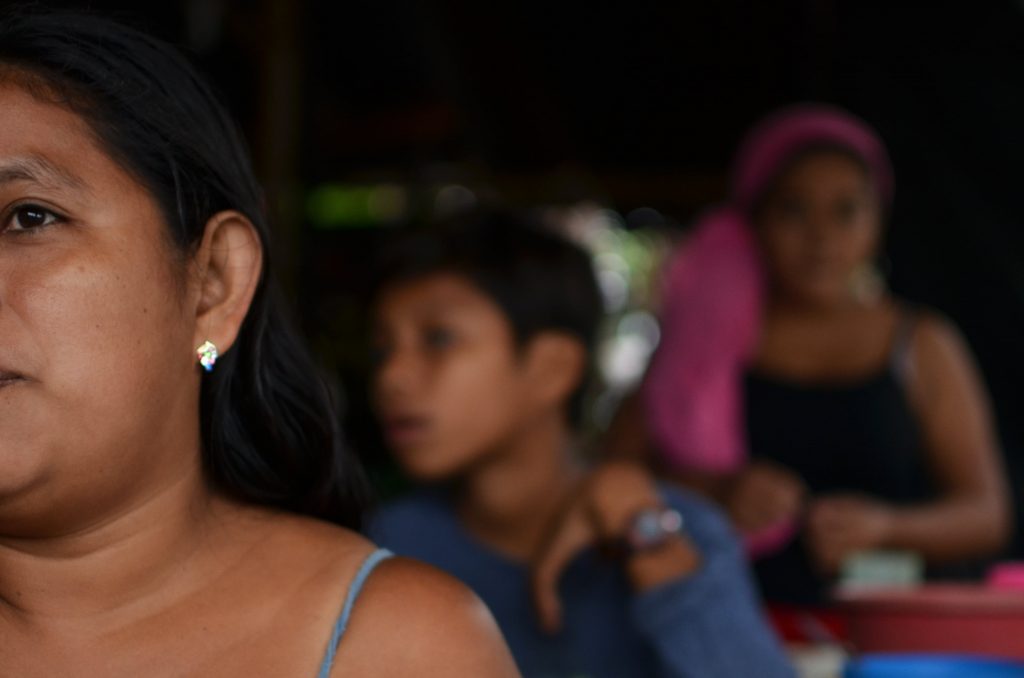
Unemployment
If anyone knows Malacatán like the palm of his hand, it’s Ambrosio López, a 59-year-old man who calls himself a “man of the fields.” He can remove his cowboy hat at midday and the sun’s intensity doesn’t perturb him.
He knows this town so well because for half his life he has been part of the Asociación Campesina de Desarrollo Integral (Campesino Association for Holistic Development), an organization born with the sole aim of resolving land-rights issues that date from the middle of the 20th century.
Ambrosio’s parents and grandparents lived the sorrow of losing the lands that they gained during Guatemala’s Revolution of 1944-1954. The abrupt end of this period, due to a coup sponsored by the US, defined the lives of many families who were evicted and ended up landless.
For farmworker families, living without land means lacking not only a fundamental source of basic income, but also food for their tables. Last year, the state of San Marcos reported 1,150 cases of acute child malnutrition. As of June, the number for 2021 is over 500.
“We’re abandoned,” Ambrosio explains. Years before, he too tried his luck leaving his country. First in Mexico, where he never earned over 10 pesos (US$0.50) for harvesting pumpkins. Later, he made it to the US, but he was deported. The attempt cost him three days of detention and the Q10,000 (US$1,250) that he’d invested in the journey, the equivalent of 240 days of backbreaking work cleaning fields under the hot sun.
Q40 (US$5) is the daily wage that people like Ambrosio or Celia Gómez receive from large landowners in the area who need labor. The wage isn’t enough to feed a family. Nor are there many opportunities to find better work.
The most common alternative is informal trading in all kinds of goods from Mexico, which are mostly crossed into Guatemala as contraband. In 2020, this income source was stripped away by the pandemic. For months, hundreds of families were forced to cease their commercial activities, in many cases their only source of income. The hardest hit were the small restaurants that offer food to the cross-border traders who pass by.
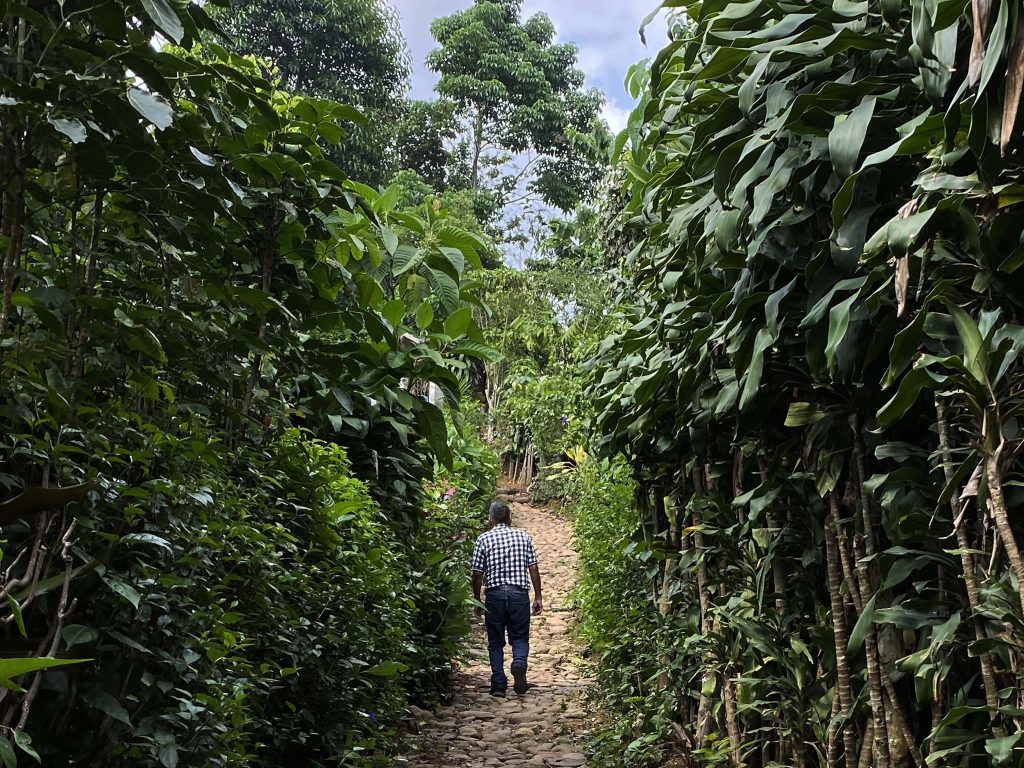
Pandemic, health and migration
The pandemic is still far from over. In June 2021, Malacatán registered 1,080 positive cases and 43 deaths of Covid-19. The town remains under a red alert.
Despite the pandemic, people from Malacatán, as in many other parts of Guatemala, seem not to fear death from Covid-19. In fact, the perception of local health authorities is that most of the population doubts the pandemic is real. The lack of prevention campaigns translates into skepticism—and faces without masks—on every street and dirt path in town.
Another pandemic that has been given little attention is that of HIV. Malacatán has the fourth-most cases in Guatemala. To attend to both pandemics and the other needs of 90,000 inhabitants, there are only three clinics, three doctors, 15 nurses, and 150 medical assistants.
In the midst of this health crisis, the problem of finding work in Malacatán has gotten worse, and many have migrated to Mexico despite the risk of contagion. Among them was the mom of Yasmín Adriana Martín, a 10-year-old girl who also lives under doña Felipa’s roof.
A little over a year ago, Yasmín was put under the care of her grandmother, and in charge of her two sisters. Her mom, 40, was tired of looking for work and went to the border city of Tapachula, Mexico, where she is a domestic worker. Once a month, she crosses the Suchiate River to see her daughters and bring money for them and the rest of the family.
“When I grow up, I want to help my mom so she can be at home,” Yasmín dreams. At her young age, her biggest dream is to replace her mom in Mexico and be the one who works for the sake of the family. Her face changes when she says her mom lives so far away.
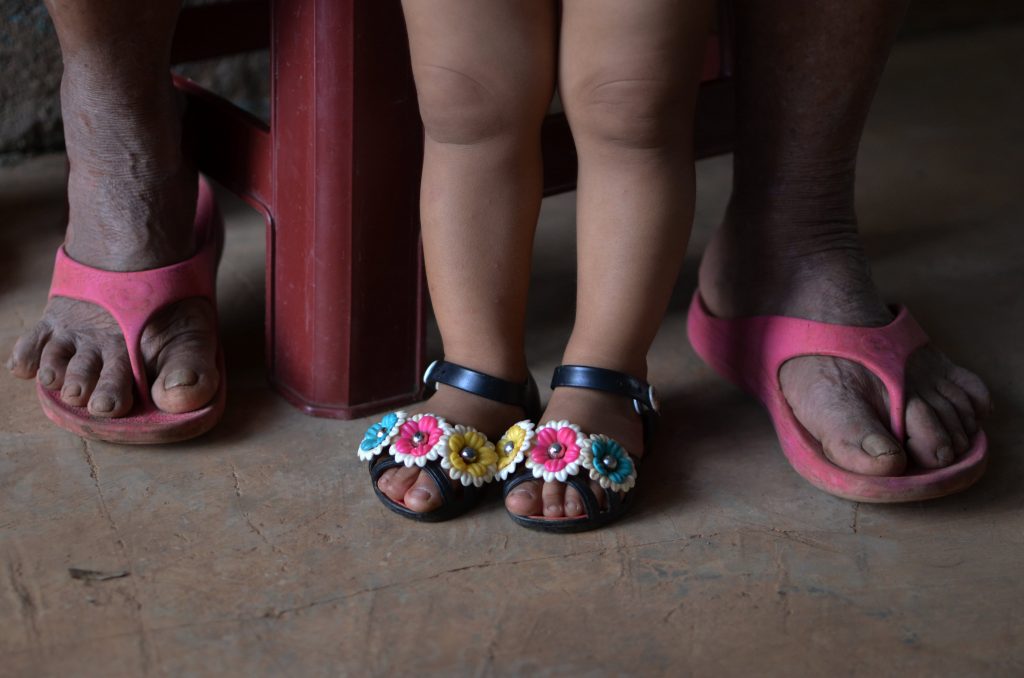
A recent Oxfam migration study shows that women tend to migrate less far than men. Those who cross the border and stay in southern Mexico can be closer to their families, but they also earn less. And what they earn, they earn in pesos, a currency weaker than Guatemala’s quetzals.
Despite the fact that Yasmín’s mom works in Mexico to support her family, her daughters in Guatemala have only the most basic necessities. They eat corn-flour oatmeal and beans day after day, and have almost nothing left for other necessities like school or health. Yasmín lives in a home with a dirt floor, without electricity, with a sheet-metal roof and an outhouse for a bathroom.
Emily Ramirez’s case is different. She’s 10, and her dad has lived in LA for 20 years. Though she misses him, she knows that without the remittances he sends every two weeks she couldn’t celebrate her birthday as she likes to, with balloons, music, surprises, guests, and presents.
Unlike Yasmín’s house, Emily’s has been fixed up. It’s a big house in the center of Malacatán, with a gate in front and a wide patio where her mom set up a used clothing stand with clothes from the US. No one in the family wants for clothes, shoes, or accessories.
Emily likes to eat tacos and does so often. Her two pet dogs also have a favorite food: fried chicken from “Pollo Pinulito,” a cheap chicken chain that Yasmín’s family couldn’t afford for themselves, let alone their pets.
The girls live only a couple of kilometers away from each other, but their worlds are worlds apart.

Life, and education, in the dark
A while back, Celia stopped feeling sorry for herself over her husband’s absence, stopped questioning how life might be if he hadn’t disappeared. She convinced herself that life must go on, and resigned herself to working locally to try to sustain her family. With the Q40 (US$5) per day that she earns in the fields, she knows she’ll never have enough to feed her family properly, let alone save enough to make “the jump” to the US.
This jump costs from Q10,000 (US$1,250) to Q15,000 (US$19,000). “We can’t even make that in three months. Imagine saving that much money to be able to go,” she says, frustrated.
Though she’s managed to survive for these eight years, life in Malacatán isn’t easy. “Here, we don’t have electricity, we wake up before dawn, everything’s done by candlelight. Here, we can’t get plumbing for water to reach the house, there’s almost no support from the government. And thank God it’s rained, because this is the water we use to drink,” Celia explains.
Something as simple as charging a phone is a complex procedure. Every day, cars from the town’s center travel around its outskirts to collect phones, charge them, and return them, for Q5 (US$0.60). Others offer the service of charging phones and other electronics with gas generators.
Since January 2021, Felipa, Celia, and another 30,000 people in 86 Malacatán communities have been living without electricity. DEOCSA, the electricity distributor, suspended service, blaming a lack of payment and illegal connections to the grid.
The problem isn’t that simple, clarifies Guillermo Díaz, one of those without electricity. People aren’t demanding free electricity, he explains, just bills that match how much electricity they actually use. According to some families, the decision not to pay was a consequence of an inexplicable rise in the charges on their bills.
This conflict is being lived out across Guatemala, and the government has stayed on the sidelines. Only the Human Rights Ombudsman’s office (PDH, for its Spanish acronym) has filed legal challenges against the company to require it to reconnect its service. But in Guatemala, these cases can take years to wind through the courts.
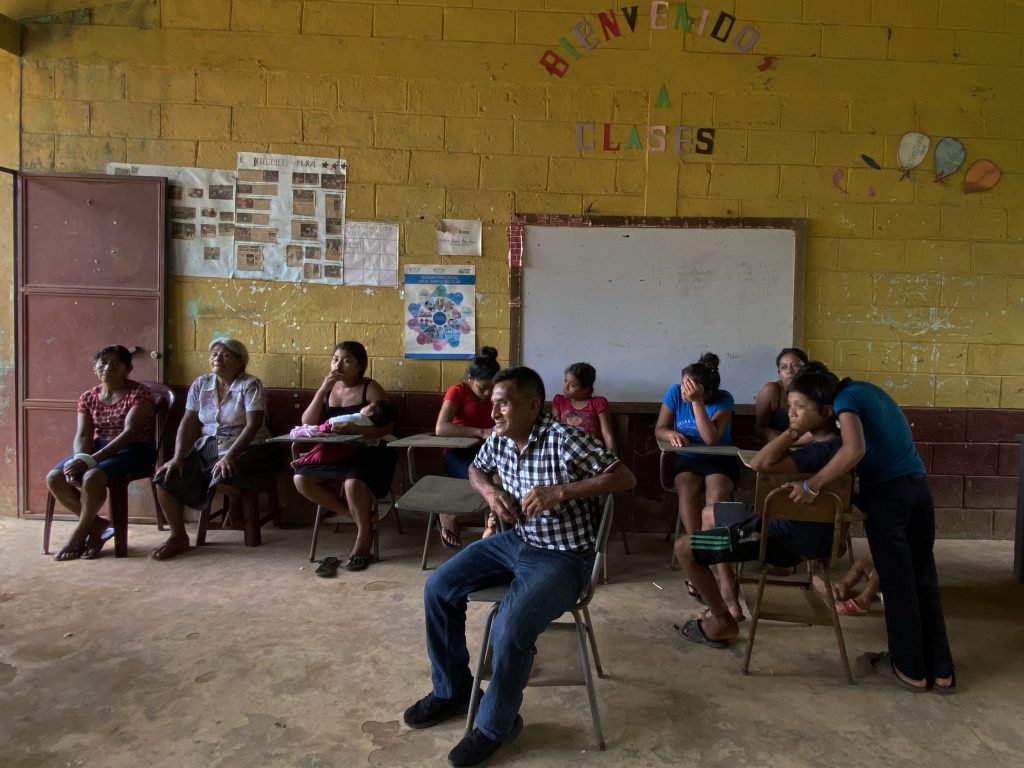
In the meantime, Malacatán’s days will continue to be shorter than they should be for the families living there. Lacking electricity, families get into bed at 6pm and wait for sleep to take hold.
And without electricity, it’s also impossible to run the online classes that the pandemic imposed on schools.
From her desk, Vilma Johana López, the principal of the elementary school in the hamlet of La Democracia, explains that a quarter of her students can’t connect to virtual platforms, send assignments by Internet, or ask questions via WhatsApp. Over the course of the year, 20 of the school’s 705 students have dropped out.
A few kilometers away, at the town’s only girls’ school, just beside a bustling market, principal Claudia Hernández is also fighting to keep students in school.
“We have to do home visits to support the girls. That way, we can help them do their assignments, because some fathers and mothers can’t read,” explains Claudia, who’s led the school for 12 years.
Her school’s classes average around 40 students, and only about 30 in each can connect to online classes; the rest don’t have phones, electricity, or Internet access.
According to the Ministry of Education, 7 of 10 girls and boys of school age in the town are still in school. But the majority stop after elementary school. It’s also common in Malacatán for kids to go to school and then shine shoes, man market stalls, sell door-to-door, or do domestic work.
Long before the pandemic, the principals faced another big challenge: Explaining to their students the risks of migration. They know the kids’ ideas about migration are formed early. They give talks, but they’re not enough. The kids’ longing to reunite with their family members is much more powerful.
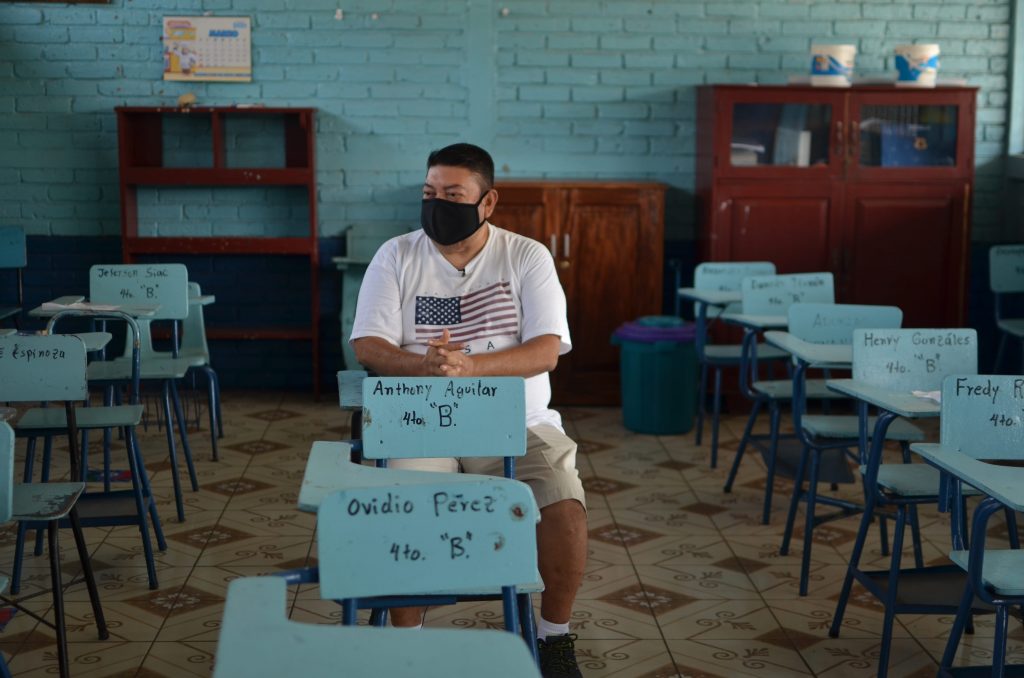
In the “15th of September” boys’ school, two students in fifth grade dropped out last year to migrate to their families. Both were lucky, and managed to reach the US—and their families—alive.
They couldn’t finish the year with their classmates, but they were happy they could send money for an end-of-year celebration. “And these celebrations weren’t allowed [this year], but they said, ‘Friends, here’s something to celebrate with,’” says Víctor García, school’s principal. The school has a patriotic name in Guatemala, yet García wears a shirt bearing the US flag.
The cycle repeats itself
In the hamlet of Ebenezer, a baby cries in the arms of Celia Gómez. It’s her youngest daughter. Four years after Juan Carlos disappeared, she met someone else with whom she had two kids.
When the baby stops crying, Celia starts on the path to the home of her mother-in-law, the mother of Juan Carlos, in the hamlet of San Juan Miramar.
She went to look for a photo or some other memory of her lost husband.
Though life’s been hard on Celia, she always speaks with a kind face and a placid look in her eyes. She looks and looks through her drawers, but can’t find a photo, or an article of clothing, or a card, or any other sign that she once had a husband. All she has from him are her sons Kevin, 15, and Miqueas, 14.
Kevin still thinks of him with a lot of warmth, but Miqueas feels a certain mistrust.
“He tells me, ‘My dad left because he wanted to. Here we would have been able to eat, even if it was just something with salt, we would have found something. We’d know that we have our dad. Now we don’t know if dad’s alive or dead,’” says Celia about Miqueas, or Micky, as everyone affectionately calls him.
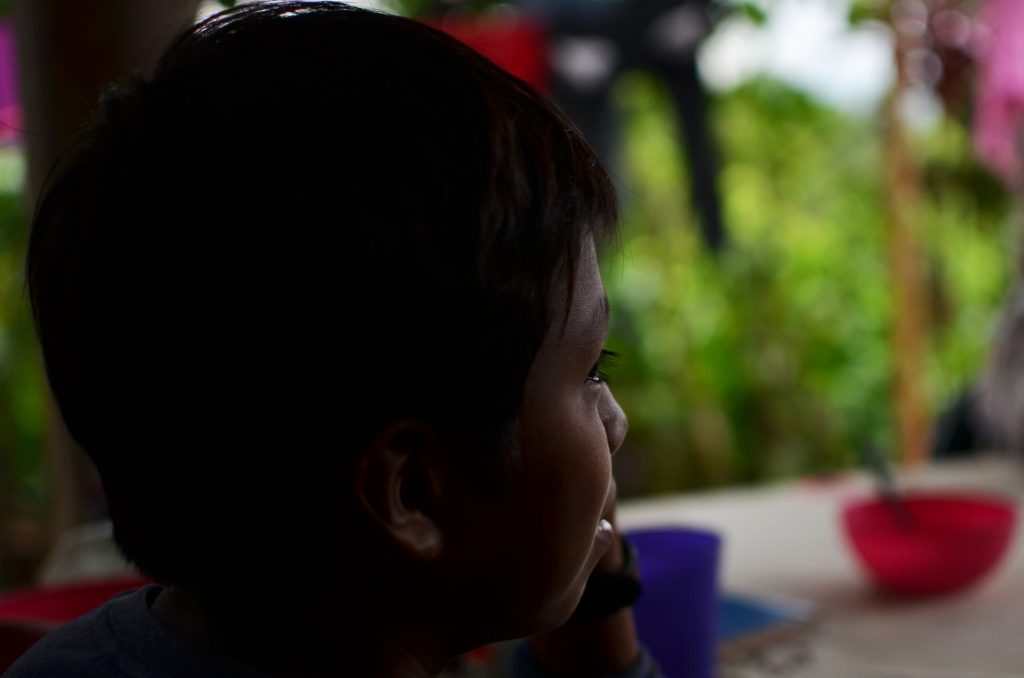
In contrast, Kevin still hopes he’ll see him again. “My older son says to [Mickey], ‘No, brother. Don’t lose hope, because someday we’ll see dad again. I know it, my heart tells me that my dad’s alive, and I can feel it.’” Celia worries that her son has false hope.
Her other great fear is that her sons endure hunger or suffer intensely because of their poverty. That’s why, when the food runs short, Celia stops eating so her boys can have enough. After all, “this is what a mother does for her sons.”
Between the poverty, the difficulty of accessing education, the lack of jobs and basic services, raising two kids in Malacatán hasn’t been easy for Celia.
On top of this are other problems hiding in plain sight. For example, the ease with which drug trafficking is growing along the border; or the fact that 75% of rapes reported in the area are against minors; or that Malacatán is a human trafficking hot zone. In the last nine years in the state of San Marcos, 351 minors have disappeared. 207 were girls.
This context influences the ideas and dreams of girls and boys, explains Sofía Figueroa, a psychologist and expert in youth migration. “They know the only way to earn money is by migrating to the US, and doing what they have to there, whatever the consequences,” she says.
As they grow up, they also have to deal with the feelings of abandonment, loneliness, and guilt that accompany the departure of a parent. This can make them anxious to grow up so they can leave. “It’s a very sad idea of the future. They think, ‘I have to leave to make money.’ They don’t go to live better, because those who leave end up enduring hardship and difficulty,” Figueroa says.
Micky isn’t so sure he wants to leave. When asked, he says “no” right away. “I like it here because here it’s laid back,” he says. He’s timid, but likes to make jokes. Since he’s the oldest of his cousins, his jokes land with the younger children. And he smiles with pride at his own sense of humor.
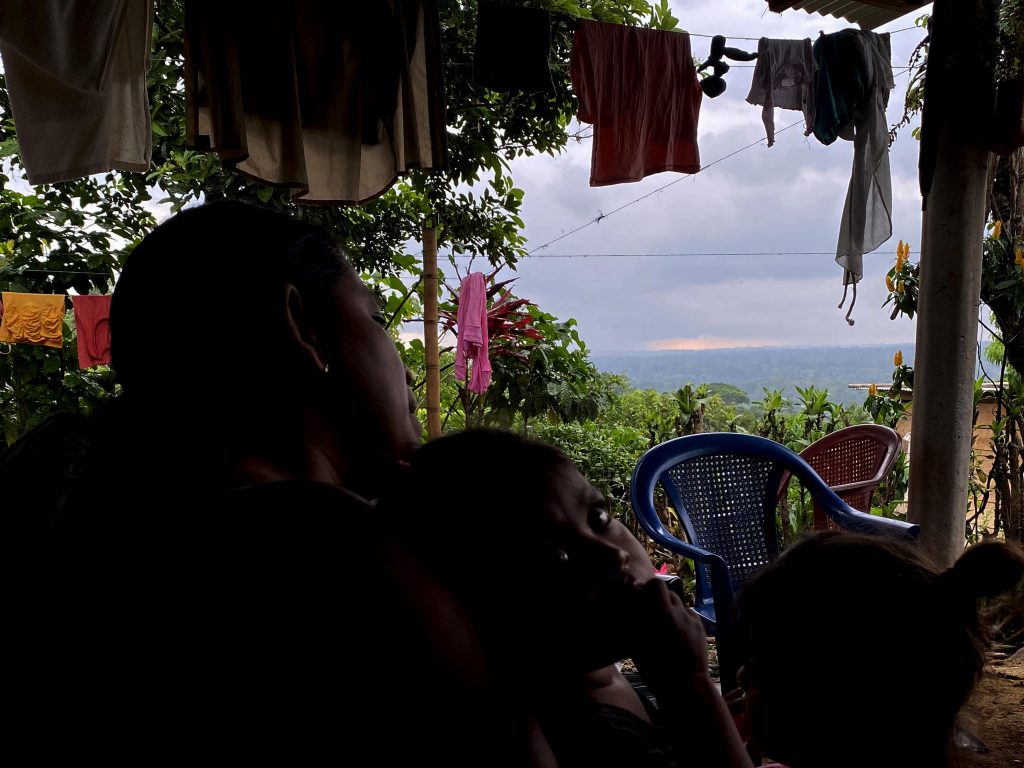
In contrast to Kevin, Micky doesn’t hold on to the hope of meeting his dad. Sometimes he’s confessed to Celia that this way is better, without a dad, because he lives ok and because he’s already big.
Minutes later, he thinks about it and retracts what he said. He thinks that maybe it’s not such a bad idea to migrate. Going to the US he would open his own bakery, because he likes bread.
The child migrant
A year ago, Micky attended school faithfully. But in Ebenezer, classes were suspended and the pandemic left the school empty. If classes return to normal, he’ll go back, at least to finish elementary school.
Kevin, his brother, won’t be able to. He dropped out to take on a role that contrasts with his young age. When he was 13, Celia says, Kevin became a man; he started to live the risks of crossing the river into Mexico by raft to go to work and come home with money for this mom.
“Work has made him a man,” Celia insists.
At first, Kevin would come back three days after crossing with a little money. But now he has a job in a bakery in Tapachula—precisely the job that Micky dreams of. Ever since he got the job, the child playing the part of a man works Monday to Friday. He returns to Guatemala every Saturday, leaves the Q200 (US$26) he earns, and returns to work on Sunday afternoon.
Every Sunday, Celia—or sometimes Felipa—goes with Kevin just to cross the border. At the Suchiate River, they pay Q20 (US$2.60) to cross on a jury-rigged raft of wooden planks and car tires. Kevin and his mom take one of these, hoping that nobody stops them; they won’t have the money to get out of an encounter with migration authorities.
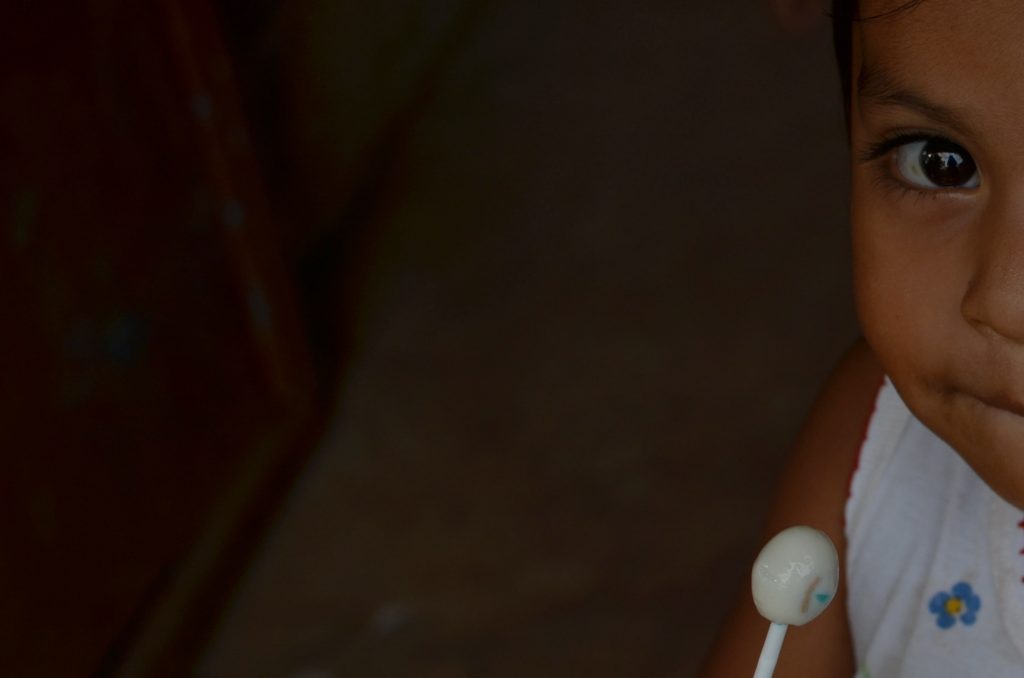
“Sometimes it hurts, and that’s why I go with him, because with all this about migration, imagine that they arrest him. They’d have him locked up for up to two months,” Celia says. In part, she confesses, she’s happy that he’s earning money and because there they feed him.
Although their dad disappeared after migrating, Micky and Kevin are willing to continue the cycle.
“From when they’re little, they see that the only opportunity for social mobility, to aspire to something, is migration,” says Úrsula Roldán, director of Rafael Landívar University’s Institute for Investigation and Projections on Global and Territorial Issues. And they do it despite everything, despite the fear and the well-known dangers at the borders.
They prefer to take this risk because they do so thinking of the future. They prefer this to staying and waiting to die in Guatemala. “It’s like what happened during the pandemic, when people took the risk of leaving because they thought, ‘Well, we’re going to die anyway from something else, better to leave to try to get ahead,’” Roldán summarizes.
Kevin wants someday to make it to the US, but he has a more ambitious dream than crossing just for work and money. He’s said repeatedly to his mom, “Mama, when I grow up I’m going to go up there to look for my dad, even if I have to look all over.”
Celia would like to support him, but even an attempt to cross is an impossible luxury due to the price a “coyote” would charge, considering they can barely afford enough food.
From the house packed to the gills, the house of single mothers, Celia dreams of one day having her own home close to all her kids. There are days where she also daydreams about Juan Carlos coming home.
“Sometimes I do have the hope that he’s alive. And then I lose it, because the years keep passing and passing, and we don’t hear anything from him. If we knew he were dead, at least we’d be able to grieve him,” she says.
While his mother speaks, Micky sits at the table with crayons in hand, daydreaming in his own style. He draws the life he imagines for himself in the US: a neighborhood with big houses where his is the most impressive. A few yards away he draws his own bakery—his future.





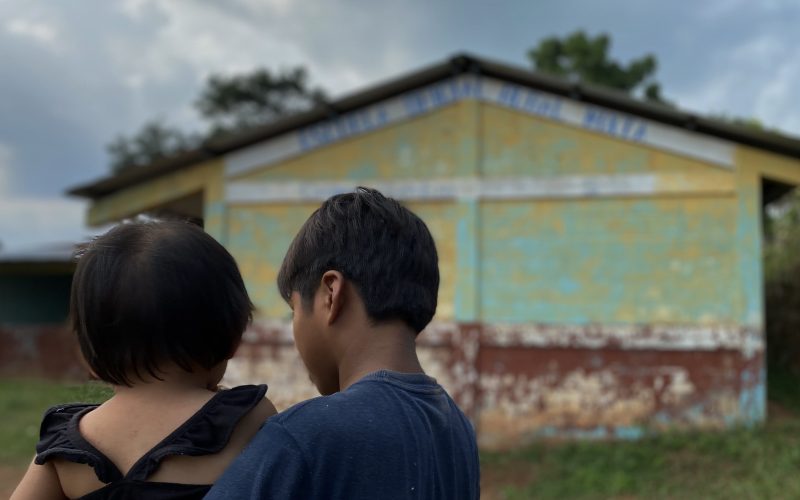
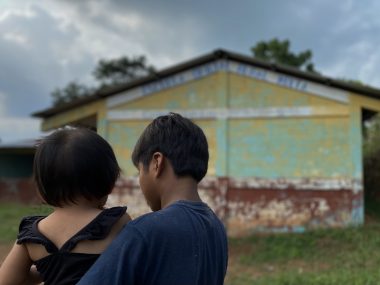
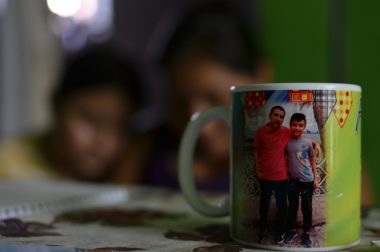
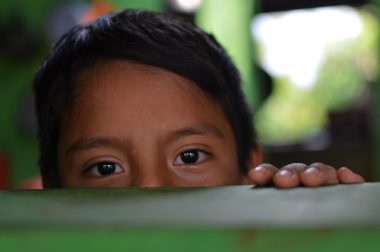
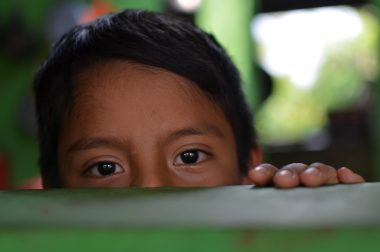
Novost